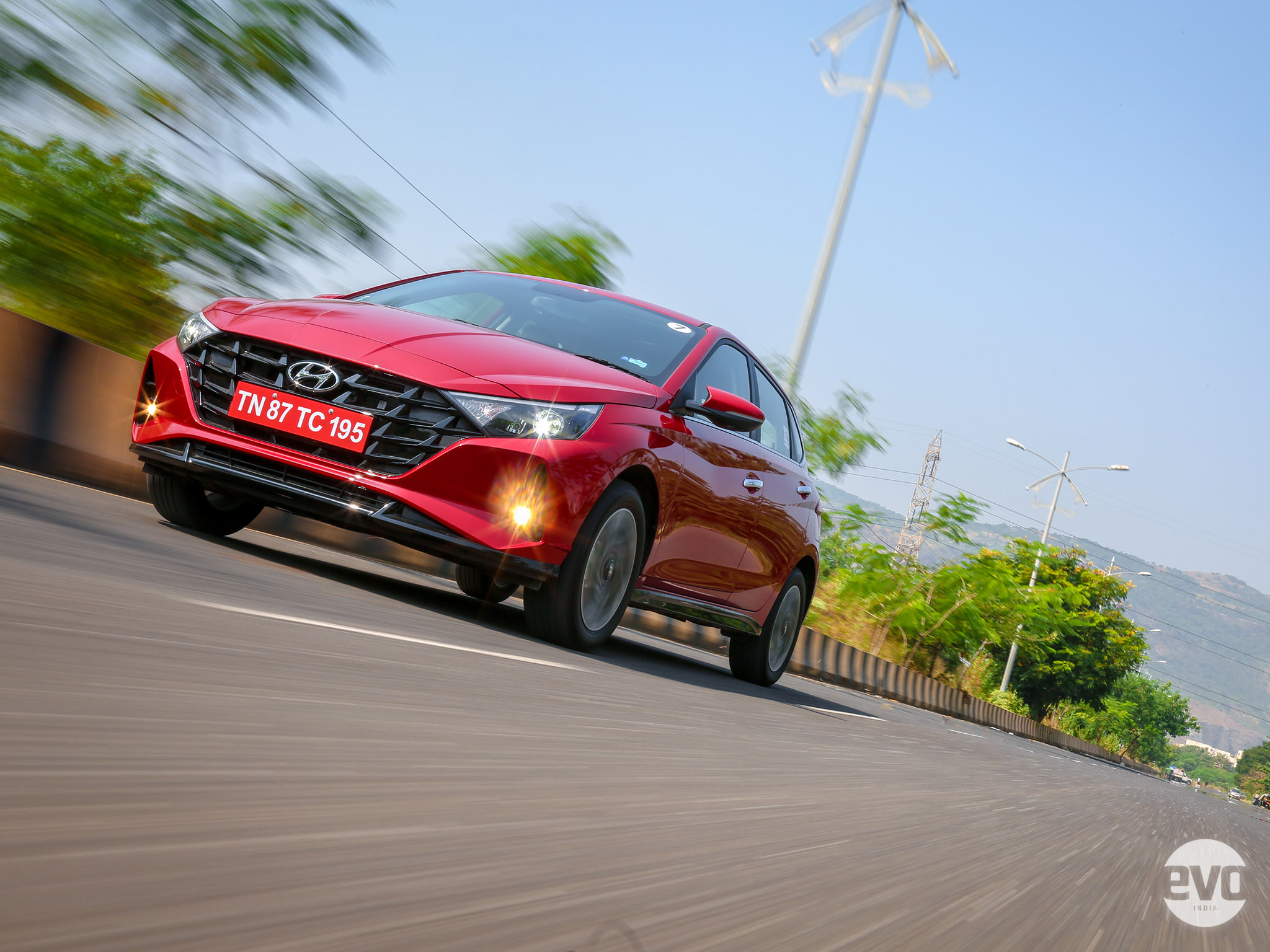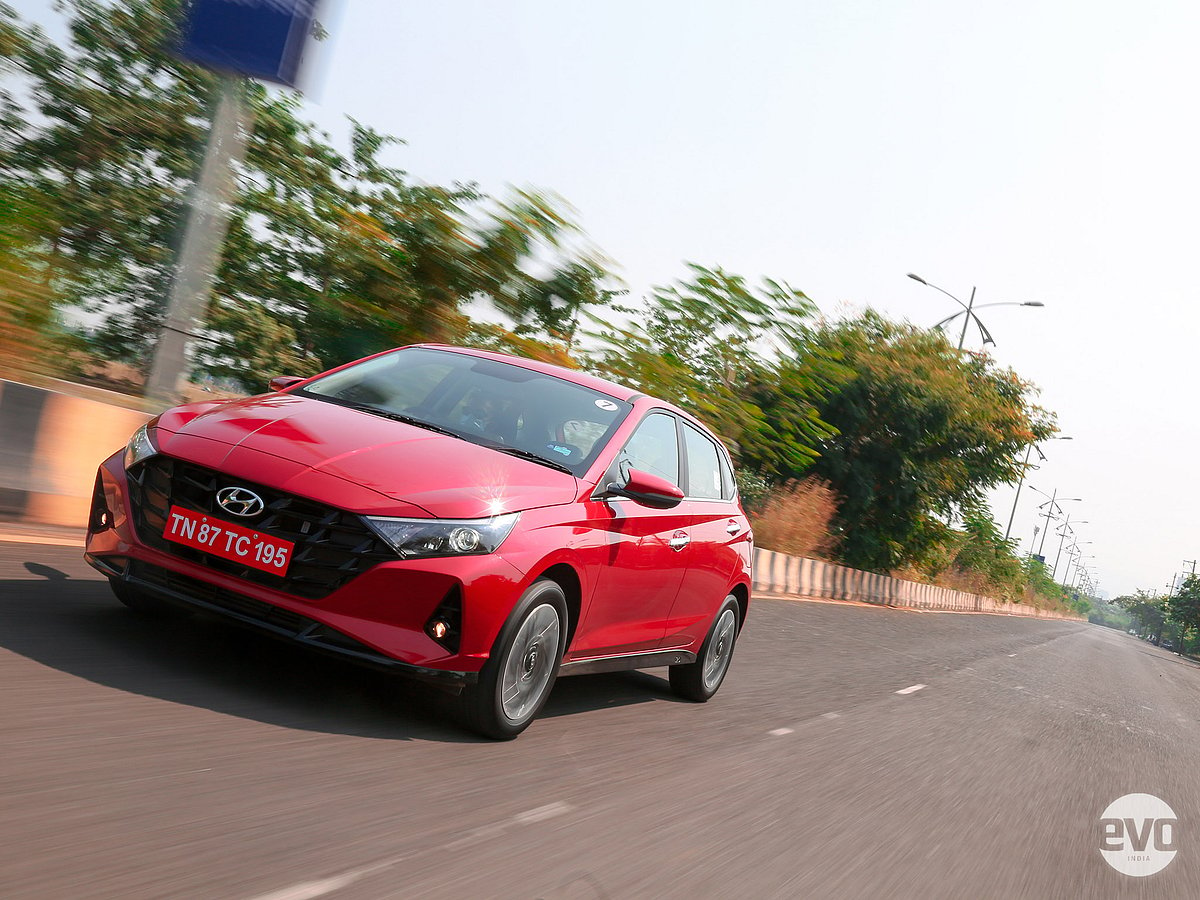2020 Hyundai i20 review | Better alternative to the Altroz, Baleno and Polo?
In its fourth generation, the Hyundai i20 raises the bar on all fronts. So we get behind its wheel to find out how much of an improvement it really is
 India gets the fourth generation of Hyundai i20
India gets the fourth generation of Hyundai i20 Gets a blacked-out jewel pattern parametric grille
Gets a blacked-out jewel pattern parametric grilleThe i20 is an extremely important car for Hyundai in India. It is somewhat of a brand-shaper, a car that put Hyundai onto the correct trajectory in India, giving the evolving set of buyers just what they wanted — modern design, refined engines and lots of features. Up until September, the Elite i20 was amongst the top ten best-selling cars in India and over its entire lifespan, it averaged monthly sales of 8000 units. So why change it if it wasn’t broken? Well, the evolution cycle at Hyundai runs every five to six years and in that sense the Elite i20 had completed its tenure.
The fourth generation i20 (first generation was the Getz) has been launched in time for the festive season and it raises the bar in every single aspect including design, features, comfort, safety and of course performance. It offers as many as five engine and gearbox options like most of its new siblings and Hyundai has an all-new i20-specific K platform. There’s 66 per cent high strength steel and advanced high strength steel to improve structural rigidity and despite that Hyundai has managed to shave off around 100kg. With the new platform, the i20 loses weight but gains more muscle. It’s 44mm wider while the length and the wheelbase both have been increased by 10mm.
Design
I attended the drivers’ briefing like a studious kid in a classroom, noting every small detail and that opened a lot of perspective. Just like Kia, there’s impeccable focus on design and according to Hyundai’s psychographic analysis, exterior design contributes to 41 per cent of all influential buying factors followed by brand reputation at 19 per cent. So there you go, the i20 gets the latest Sensuous Sportiness design language (first seen on the 2019 Elantra facelift) and let alone this expression, there are thankfully no strange design inspirations for the exterior like those from the sister brand.
The Elite i20’s headlamps and grille were positioned separately. In the new i20, they’re part of a singular unit making for a more attractive front end. The ‘jewel pattern parametric grille’ looks aggressive, especially with the gloss black finish. It’s flanked by LED projector headlamps with LED DRLs and projector fog lamps. The bonnet is sculpted and sports ample cuts and creases while the splitter, also finished in gloss black, is another neat touch. The front end looks attractive, but the rear is somewhat of a miss in my opinion. The wraparound Z shaped LED taillamps united by a chrome strip don’t quite do justice to the overall design that’s bold and sporty.
 The fourth genertaion i20 is 44mm wider
The fourth genertaion i20 is 44mm widerInteriors
Step inside and there’s a world of difference. Gone are the dual tone beige and black interiors, paving way for a sporty all-black cabin. The air vents’ design runs across the dashboard, significantly accentuating the cabin width. From the driver’s seat, the very first thing that catches your eye is the massive digital instrument cluster with sporty graphics. It’s identical to that of the Verna and houses a central MID that displays tyre pressure, range, gear shift indicator and parking sensor display among other things. Sitting besides the cluster is the 10.25-inch touchscreen infotainment, identical to that of the Creta. It’s the largest in the segment and it’s compatible with Android Auto, Apple CarPlay and Tizen platforms. The touchscreen runs smoothly without any lags while navigating through the menus.
 The cabin is in all dual tone beige and black colour
The cabin is in all dual tone beige and black colourThe i20 is also the first car in the segment to feature a whole suite of connected car features. The upgraded Bluelink system now packs as many as 55 connected car features including geo fencing, remote engine start/stop, remote door lock/unlock, vehicle health report among many others. More segment first features include the brilliant Bose 7-speaker audio system that’s even better than the Harman system in the Altroz. That said, there’s also a wireless charging deck with cooling, ambient lighting, electric sunroof and sporty metal finished pedals that I absolutely love.
Rear seat comfort
This new platform has opened up more room on the inside. There’s 40mm more shoulder room at the rear and as much as 88mm of additional leg room. No longer does the rear seat feel cramped and even tall adults will be comfortable here. Even the boot space has increased from 285- to 311-litres. However there’s one grouse. The rear seat doesn’t get adequate bolstering and the backrest and the seat squab aren’t scooped out adequately. While driving over rough roads, the flat rear seat doesn’t really hold you in place.
Driving impressions
I drove the 1.2-litre petrol that makes 82bhp at 6000rpm and 114.7Nm of torque at 4200rpm. This engine can be had with two gearbox options — the five-speed manual or the Intelligent Variable Transmission (IVT). This powertrain was never known for the thrill of driving, but with 100kg less to lug around, the performance feels peppy. The throttle reacts sharply to your inputs and once you’re in the peak power band, the i20 moves eagerly. The motor is tractable and the gear ratios are well-spaced out, and that means you can cruise comfortably at 100kmph in the fourth gear, with ample power in reserve to go faster. However, there isn’t enough bottom end grunt, the acceleration is fairly laid back and you're compelled to downshift to get going. I suspect this problem will largely be solved in the torquey turbo-petrol and diesel variants that we’ll get to drive after the Diwali break.
On the upside, this is one of the most refined powertrains in its segment. At idle, the engine is entirely inaudible. Even while cruising at about 3000rpm in the third cog, you can’t hear the engine and it’s audible only beyond 4000rpm. This also speaks volumes about the new i20’s NVH levels that have significantly improved compared to the Elite i20. There’s minimal wind noise, minimal tyre noise and watching our photographer Abhishek scream from the outside to get the car positioned correctly for the shoot was hilarious because I couldn’t hear a thing with all windows up. Play your favourite track and the Bose sound system will entirely isolate you from the outside world.
 Great visibility from the driver's seat
Great visibility from the driver's seatRide and handling
All new Hyundais like the Creta, Verna and even the Grand i10 Nios offer properly evolved ride and handling and the new i20 builds on that same script. The suspension has been tuned for a great balance between a comfortable and sporty ride. The i20 gobbles up the ruts and surface undulations without being unsettled and the rebound is very precise. After going over a pothole, the dampers manage to retain the balance of the chassis almost instantly. And when you build up speed, the i20 feels solid and planted. Straight line stability is confidence inspiring and encourages you to push further. On the highway really it feels sure-footed.
Thanks to a significantly lower kerb weight and a precise suspension set-up, handling has improved too. There were few corners at our shoot location so I can’t delve deep into the handling, but my first impressions are that the i20 feels agile and it likes switching directions. The improved structural rigidity and a well-balanced suspension set-up combine for taut body control and that has significantly improved the overall ride and handling. However, a little more grip from the Ceat SecuraDrive tyres would have been appreciated.
 At high speeds the i20 feels solid and planted
At high speeds the i20 feels solid and plantedVerdict
The new i20 is a massive step-up from the car it replaces. The sheer breadth of its abilities is what makes it stand out compared to rivals like the Tata Altroz and the Maruti Suzuki Baleno. The striking design will certainly turn heads and the amount of features on offer makes you feel greedy. This 1.2-petrol certainly won’t be the best engine option to have considering that the turbo-petrol and the diesel powertrains are more exciting on paper. But it will most likely sell more than the other two and in terms of refinement, nothing comes close.
 The fourth generation i20 raises the benchmark for all the other premium hatchbacks
The fourth generation i20 raises the benchmark for all the other premium hatchbacksAt a starting price of Rs 6.8 lakh, ex-showroom for the base petrol manual variant and Rs 9.19 lakh for this range-topping Asta (O) that we reviewed, the new i20 costs significantly more than its rivals. But if you shell out the extra bucks, the i20 feels as sophisticated as cars from one or even two segments above. We did a premium hatchback comparison test a couple of months ago with the Tata Altroz, Maruti Baleno, Volkswagen Polo and the Elite i20. The Altroz was the clear winner of that test, but now with the arrival of the new i20, I think it’s time for a rematch.


